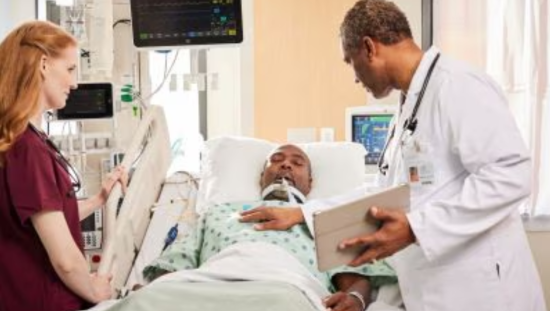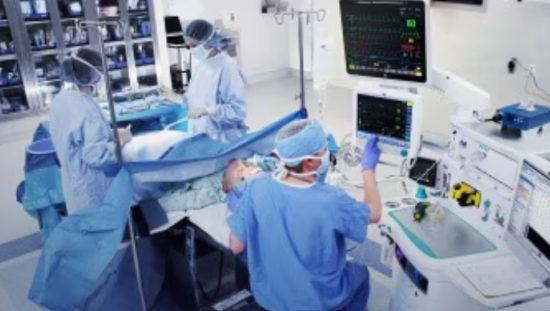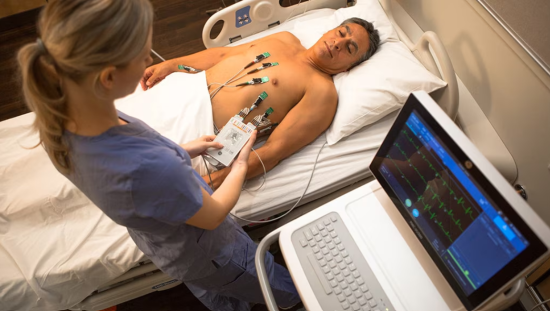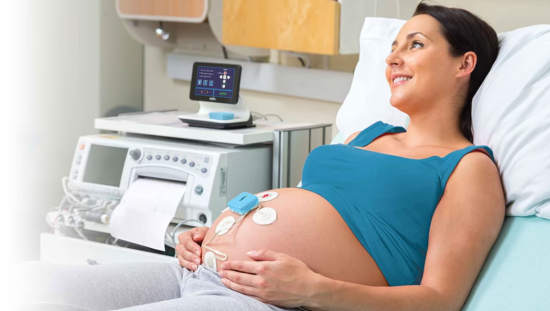Techniques of quantitative neuromuscular monitoring: which is the best equipment to use?
In this podcast, Dr. Pavan Raju reviews techniques of quantitative neuromuscular monitoring and discusses which is the best equipment to use.
Show Notes
Transcript
Speakers
Welcome to this podcast series produced by the Association of Anesthetists and sponsored by GE HealthCare. On the subject of neuromuscular monitoring in 2024, are we practicing to the highest possible standards?
In this podcast, Dr. Pavan Raju reviews techniques of quantitative neuromuscular monitoring and discusses which is the best equipment to use.
Insights, interviews and best practices by clinicians for clinicians. Welcome to GE HealthCare's Clinical View podcast.
Andrew Mortimore: Welcome everybody to this podcast produced by the Association of Anesthetists and sponsored by GE HealthCare. On the subject of neuromuscular monitoring in 2024, are we practicing to the highest possible standards? The podcast will cover four main areas.
Firstly, the pharmacology of reversal agents and benefits and side effects. Then, an overview of strategies for reversing neuromuscular block. Followed by an update on the latest American and European guidelines on monitoring neuromuscular block.
And then finally, techniques of quantitative neuromuscular monitoring, which is the best equipment to use. We hope you will enjoy this podcast and gain something from it. Now, the first speaker that we have with us today is Dr. Pavan Raju, who is a consultant anesthetist at Tayside since 2013 and has a special interest in ultrasound and regional anesthesia, neuromuscular blockade, obstetric anesthesia and preoperative assessment. His career in medicine started in Bangalore, southern India, and he completed his post-graduation in anesthesia in the University of Mumbai. He moved to the UK and continued training in London and Tayside. His non-clinical interests lies with medical education.
He's the lead for undergraduate teaching and he offers postgraduate trainee support by being an educational supervisor. He's also passionate about environment and sustainability issues in hospitals. When he's not at work, he likes to spend time with his family and tries hand in photography and painting.
So welcome, Pavan. I hope you're well.
Dr. Pavan Raju: Thank you very much, Andrew. Thanks for the invite.
Andrew Mortimore: Excellent. And the subject you're going to cover for us is techniques of quantitative neuromuscular monitoring, which is the best equipment to use. And so the first thing, if you could talk about for us, what are the key features to look for in quantitative neuromuscular monitoring equipment and how do different devices compare in terms of accuracy and ease of use?
Dr. Pavan Raju: Thank you, Andrew. That's a really good question. So unfortunately, although I'm going to start with a negative aspect here, we don't have an ideal quantitative neuromuscular monitor.
So when I say ideal, what are the things that we're looking for? Obviously, the user friendliness of the monitor that we're going to use and a portable, robust monitor that gives you accurate and reliable readings. And also a monitor that could be easily accessed during the whole of procedure, say at the induction interoperative period, especially when the hands are tucked.
And most common site of monitoring is the ulnar nerve and the erector pollicis unit. So that access is very, very important. And also a monitor which doesn't cause direct muscle stimulation.
So all these are important features. And currently, we don't have a single monitor which will do everything. But saying that, we have plenty of options available.
And I can speak through, mention about the different mechanisms and the different monitors that are available briefly and explain the advantages and disadvantages of each, if that's okay. So the most common, I mean, the gold standard is mechanomyography, but the whole setup is quite complex and it's big in size. And clinically, the monitor that can be used in clinical settings is not available.
It's confined to research. However, there are other mechanisms that have been used to develop these monitors that could be used in clinical settings. The most commonly available, and it's been in clinical practice for a longer time, is based on something called acceleromyography, which is based on Newton's second law, which states force is equal to mass times acceleration.
So this mechanism has advantages of not needing a lot of expensive disposable electrodes. So they come in two different ways, either an integrated module with the whole set of other monitors or a solitary portable unit. And also, it comes as two different display versions, depending on the company you're using.
One of them displaces a truncated train of four ratio. When I say truncated, it doesn't go beyond 100%, and I'll explain that in a minute. And a few other monitors which displace a raw TOF ratio, which means the TOF ratio, initially when recorded before paralyzing a patient, could go beyond 100%.
So what that means is, there's a couple of caveats with this mechanism. One is a well-known mechanism called reverse fade and normalization. We don't know the exact mechanism behind this, why it happens with acceleromyography only, but what it essentially means is, the initial TOF ratio when measured before paralysis, it would be beyond 100%, for example, 120% or 135%.
And the way to come around it is, we should do something called normalization, which is the international consensus for recovery of neuromuscular blockade is TOF ratio more than 90%. When I say 90%, it's the 90% of the initial reading, as opposed to 90% where the number that displayed on the monitor, if that makes sense. So for example, if the initial reading is 120%, what we should be looking for is 90% of 120%, which is 108%.
So that is what we should be aiming for. And the listeners might be wondering, what happens in those monitors where the ratio is truncated, which means it doesn't go beyond 100%. In those cases, the easy option is just to aim for 100% reversal towards the end, or at least more than 95%.
And it's not just about the number. A lot depends on the strategy used, the type of muscle relaxant that is used, and the type of reversal agent that we use. The key message here is, we should use the contradictory neuromuscular blockade monitor, and use the information it provides in the overall strategy of neuromuscular blockade management.
The second mechanism that's used and is commonly available is called electromyography. In my opinion, this is the closer one to the gold standard in terms of accuracy, in terms of reliable readings. And we don't have the caveats of acceleromyography, such as reverse fade and arms being available all the time, or thumb being available all the time.
Position of the hand really doesn't matter, and it gives accurate readings because it measures the activity at the neuromuscular junction. So its electromyography is relatively new, and there are a few monitors that are available in the market now, and it's being used extensively, and there's a lot of evidence coming out to demonstrate its efficacy. So in my opinion, if you didn't have any monitor in your workplace, I would be going for electromyography, which basically measures the compound muscle action potential of the stimulated muscle, based on the event occurring at the neuromuscular junction.
And there are other mechanisms, which I won't describe too much in detail because of the time, and there's a lot of information available in the literature, the compressor myography, which is based on cough-based mechanism, and also the other one is kinemyography, which is based on the degree of movement of the sensor, which is quite similar to AMG or acceleromyography, but there is no reverse fade phenomenon in that. And then finally, still at the research stages, is the phonomyography or acoustic myography.
So there are different mechanisms, but for practical purposes, the ones that are available to use are based on EMG and AMG. So I appreciate I've not given the entire information here, because that would take a much longer time. So this is the kind of brief summary of what is available to us, and the advantages and disadvantages of these two monitors.
Andrew Mortimore: Thanks Pavan, that's a compelling argument you've put forward there, I think, for the use of this technology, and hopefully it will enable people to bring that forward in their own departments, if they haven't already done so. So thank you very much for your time. If I could ask you if there's just one tip that you could give to people trying to persuade those that are responsible for the investment.
One thing to say to them, what would it be?
Dr. Pavan Raju: I think the biggest motivation for me, and at this moment I have to take my mentor and friend and a colleague's name, Dr. Grant Rodney, who I've learned a lot from, who's done a lot of work around this topic, is improving patient safety and the outcomes. I know it's a very complex topic, it's multifactorial, but certainly neuromuscular blockade management has a significant effect on this. And if we pay attention to this, one reason to improve the outcome is already there.
So I think improving patient safety is a big, big motivation for me.
Andrew Mortimore: Thank you very much Pavan for your time, and I'd like to extend the thanks of the Association of Anaesthetists and of the sponsors of this podcast, GE HealthCare, for the time you've taken to prepare and to deliver your thoughts in this podcast. So thank you very much.
Dr. Pavan Raju: Thank you very much for having me. It's been a pleasure.
Andrew Mortimore: This concludes the podcast on neuromuscular monitoring in 2024. Are we practicing to the highest possible standards? And we would like to thank all of the speakers who have taken part.
We'd like to thank the Association of Anaesthetists, and we'd like to thank the sponsors, GE HealthCare.
Thank you for listening to Clinical View Podcasts, brought to you by GE HealthCare. Expand your view at clinicalview.gehealthcare.com

Dr Pavan Raju
Consultant Anaesthetist at Tayside, special interest in Ultrasound and Regional Anaesthesia, Neuromuscular blockade, Obstetric anaesthesia and pre-operative assessment.









